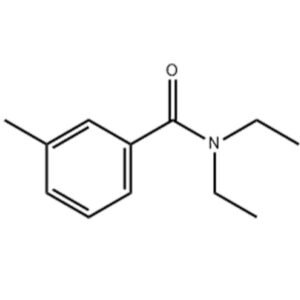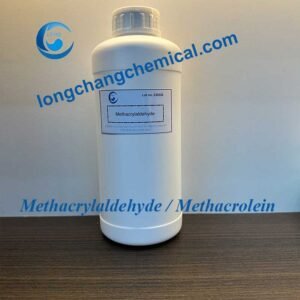Descripción
Metoxipolietilenglicoles Propiedades típicas
| Artículo |
Especificaciones |
Resultados |
| Aspecto a 25 °C |
Escama blanca |
Escama blanca |
| Color (Pt-Co) |
0~80 |
30 |
| Número de hidroxilos (mgKOH/g) |
23~28 |
25.3 |
| Peso molecular |
2000~2400 |
2218 |
| pH |
5.0~7.0 |
6.35 |
| Agua (% m/m) |
≤1.0 |
0.32 |
Metoxipolietilenglicoles Uso
Se pueden aplicar a hormigones comerciales de alto rendimiento y alta resistencia (C60 o superior) en mezclas in situ y transporte a larga distancia. Metoxipolietilenglicoles.
- Industria de los polímeros: Los metoxipolietilenglicoles, con número CAS 9004-74-4, se utilizan comúnmente en la industria de los polímeros. Son componentes clave en la producción de diversos polímeros y copolímeros, y contribuyen a la modificación de las propiedades de los polímeros.
- Agente emulsionante: Este compuesto se utiliza como agente emulsionante. Los metoxipolietilenglicoles pueden contribuir a la estabilidad y textura de las emulsiones, lo que los hace valiosos en formulaciones como cremas, lociones y productos industriales.
- Industria textil: Los metoxipolietilenglicoles pueden emplearse en la industria textil. Se pueden utilizar en procesos de acabado textil, aportando suavidad y tersura a los tejidos.
- Productos de cuidado personal: En la producción de productos de cuidado personal se utilizan metoxipolietilenglicoles. Se incluyen en formulaciones para productos de cuidado de la piel y del cabello debido a sus propiedades emulsionantes y acondicionadoras.
Metoxipolietilenglicoles Embalaje y envío
Embalaje: 200 kg/bidón
Metoxipolietilenglicoles Almacenamiento
Debe colocarse en un lugar fresco y seco.
¡Póngase en contacto con nosotros ahora!
Si necesita COA, MSDS o TDS, rellene el formulario con sus datos de contacto y nos pondremos en contacto con usted en un plazo de 24 horas. También puede enviarme un correo electrónico a info@longchangchemical.com durante el horario laboral (de 8:30 a 18:00 UTC+8, de lunes a sábado) o utilizar el chat en vivo de la página web para obtener una respuesta rápida.
Are acetonitrile and water miscible under any conditions?
Acetonitrile is a common
organic solvent. In reversed-phase liquid chromatography analysis, acetonitrile-water acts similarly to methanol-water and is often used as the mobile phase. Obviously, acetonitrile is a polar solvent similar to methanol. It is generally believed that acetonitrile is miscible with water under any conditions.
Many of the so-called conclusions will be better understood day by day as scientific research progresses. This paper summarises the results of critical learning in this open environment by listing the experimental conditions that may lead to phase separation of acetonitrile-water homogeneous solutions, as well as four related extraction methods. Acetonitrile salting-out extraction, acetonitrile sugar precipitation extraction, acetonitrile low-temperature extraction, and solvent-induced phase change extraction. Acetonitrile-based extraction methods dispersed in the literature are organised, summarised and shared with you to improve the body of knowledge on the properties of acetonitrile, with a view to applying these properties to your practical work.
1 Several situations where acetonitrile and water are not miscible
1.1 Salt and acetonitrile-water system
In the uniform and transparent solution composed of acetonitrile and water, add an appropriate amount of inorganic or organic salt, and the phase separation between acetonitrile and water will be seen. Since the density of acetonitrile is lower than that of water, the upper phase is rich in acetonitrile (containing a small amount of water), and the lower phase is poor in acetonitrile (mainly water). This salt-induced phase separation of acetonitrile is called the salting-out phenomenon of acetonitrile. The addition of salt produces a strong hydration effect, and the salt binds more water molecules, which significantly reduces the number of free water molecules that can interact with acetonitrile, resulting in phase separation. In this way, the substances originally dissolved in the water phase can be extracted into the acetonitrile-rich phase during the phase separation process. This extraction method is called the acetonitrile salting-out extraction method. Salts used as phase separation initiators mainly include: sodium chloride, calcium chloride, zinc sulfate, ammonium sulfate, magnesium sulfate, tetrabutylammonium perchlorate, etc. The type of salt will affect the extraction recovery rate. It should be pointed out that the organic solvents that can produce phase separation in the originally water-miscible solution under the induction of salt are not only limited to acetonitrile, but also have such properties as ethanol, isopropanol, and acetone. However, since acetonitrile as a sample matrix can be well matched with the acetonitrile-based mobile phase analyzed by reversed-phase liquid chromatography, the acetonitrile salting-out extraction method is particularly popular.
1.2 Sugar and acetonitrile-water system
In 2008, Wang from the University of Illinois in the United States reported an acetonitrile-water phase separation phenomenon caused by sugar. When monosaccharides (glucose, xylose, arabinose or fructose) or disaccharides (sucrose or maltose) above a certain threshold are added to the acetonitrile-water solution, significant phase separation will be seen. Polysaccharides do not possess such properties of inducing phase separation. Other commonly used organic solvents that are miscible with water (such as methanol, ethanol, n-propanol, isopropanol, acetone) do not have the property of being triggered by sugars and having phase separation with water. The upper phase after phase separation is the acetonitrile-rich phase, and the lower phase is the acetonitrile-poor phase. The extraction method based on this phenomenon is called the acetonitrile saccharification extraction method.
1.3 Low temperature and acetonitrile-water system
In 1999, Yoshida and his colleagues reported a phenomenon in which acetonitrile and water phase separated due to low temperature. When the solution of acetonitrile and water (volume ratio: 1:1) is placed in an environment of -20 °C for 20 minutes, the phase separation of acetonitrile and water will be observed. The extraction method based on this phenomenon is called the acetonitrile low-temperature extraction method. Generally, the temperature at which phase separation occurs is controlled from -40°C to -40°C, because the melting point of acetonitrile is -45°C. In the experimental temperature range, the acetonitrile-rich phase is a liquid phase, while the water-rich phase is mostly a solid phase. Experiments have confirmed that most common organic solvents that are miscible with water at room temperature do not have the ability to phase separate from water at low temperatures. Compared with the other two acetonitrile-based extraction methods, the acetonitrile low-temperature extraction method does not require the introduction of third-party phase initiating reagents, so the system is relatively simple and will not cause pollution to subsequent separation and analysis work. In addition, low-temperature extraction also avoids the chemical changes of temperature-sensitive molecules caused by higher temperatures, making the analysis results more reliable.
1.4 Hydrophobic solvent and acetonitrile-water
Adding a hydrophobic and miscible organic solvent (such as chloroform, dichloromethane, toluene) to the homogeneous acetonitrile-water system can induce phase separation in the acetonitrile-water system. The extraction method based on this is called the solvent-induced phase Change extraction.
- Conclusion
"Are acetonitrile and water miscible under any conditions?" This question seems to be very simple, and the conclusion has long been given in existing textbooks. However, with the rapid development of information technology, we can more easily access literature and update knowledge content with the times.






Valoraciones
No hay valoraciones aún.